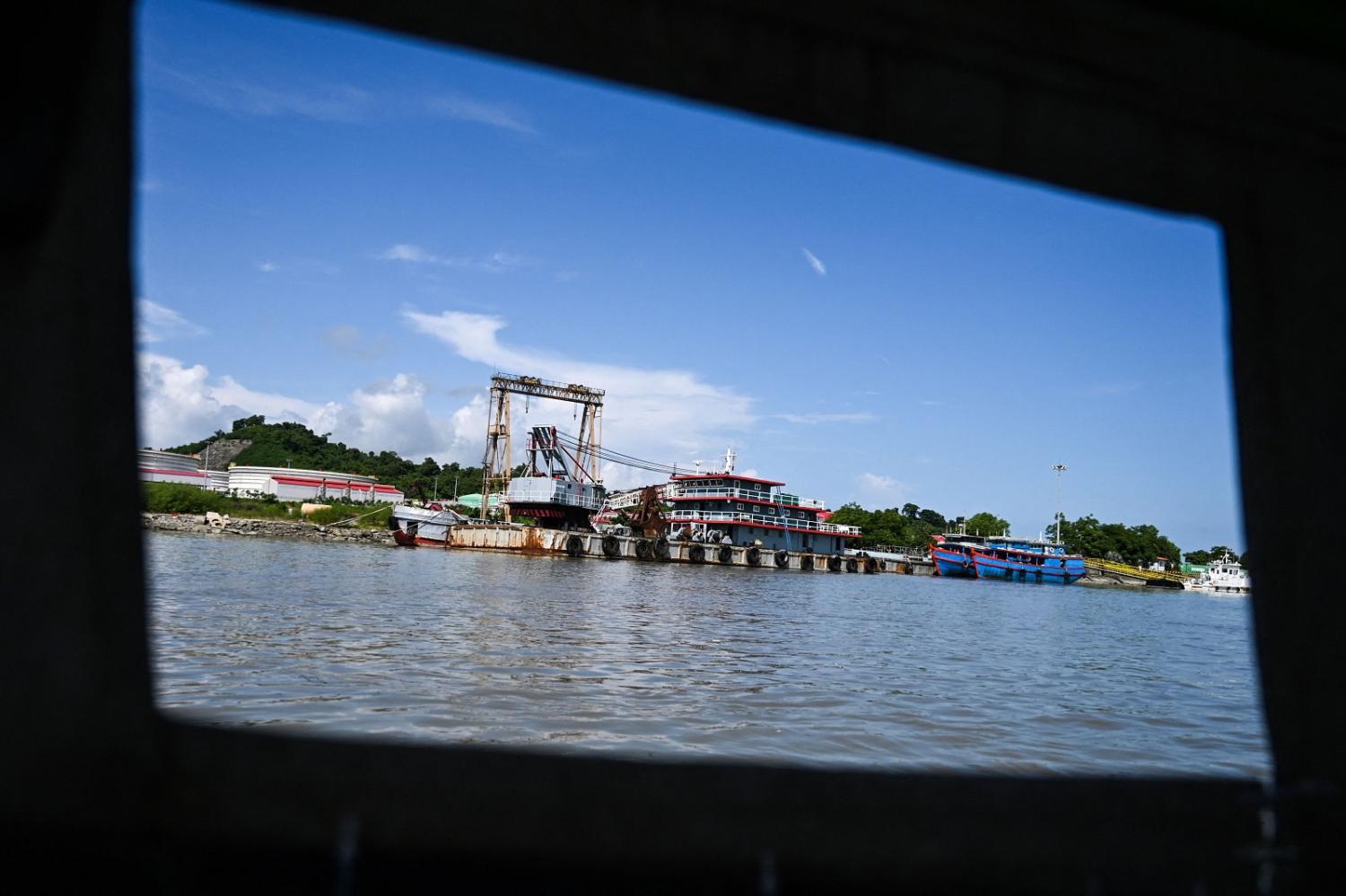In Myanmar’s westernmost state of Rakhine, the small fishing village of Kyaukphyu has become the focus of a US$7.3 billion deep-water port development by Chinese state-owned entities with an accompanying US$2.7 billion special economic zone. Beijing’s push to begin construction on the Kyaukphyu Port makes sense, considering it offers a land route for trade that avoids pirates and chokepoints along the Strait of Malacca and safeguards US$1.5 billion in oil and gas pipelines running from Kyaukphyu to Yunnan. What concerns some is the potential influence China could wield over Myanmar as a result, and its majority ownership of a regional port with dual-use potential.
An Asia Society report has outlined how Kyaukphyu Port could accommodate People’s Liberation Army Navy vessels, but political and legal restrictions within Myanmar make establishment of a formal Chinese base unlikely. The real danger could lie in Beijing exerting unequal influence over a nation in civil decline that can ill afford such infrastructure independently.
Chinese firms have been given the green light on a 50-year lease over the port with 70% ownership, while Myanmar’s 30% stake represents more than 4% of its 2023 GDP. The nation’s fortune rests on the success of the special economic zone, but if the government can’t stump up the funds, it could turn to China again for further funding.
There is also the potential of Beijing translating this economic influence at some juncture into military use of the port. While contestable, this strategy doesn’t seem beyond a power that has militarised artificial islands in disputed territories and was shown in the 2023 State of Southeast Asia report to be broadly distrusted in the region for its coercive behaviours.

Port and resort development around the Cambodian province of Koh Kong offers a similar example. Koh Kong Port has been designed in a manner that supports the docking of Chinese naval destroyers, and questions have been raised about building a 6000-guest capacity resort on an undeveloped Koh Rong island that lacks unique tourist attractions. Potential dual-use infrastructure could be supported by another Beijing-backed construction of a 2650-metre-long runway at the nearby Dara Sakor Airport, the same length as Chinese airstrips built on artificial islands in the South China Sea and more than is required for commercial cargo aircraft.
Both developments hold great potential benefit for Cambodia but, as with Kyaukphyu, also represent the danger of deepening Chinese sway over regional nations and assets with dual-use potential. Koh Kong Port is being undertaken by a Chinese entity on a 99-year lease at 70% ownership, while Dara Sakor is being developed on a 99-year lease to a Chinese company currently under US Magnitsky Sanctions.
These developments in a region described as the “security gateway” to Australia, the geopolitical and strategic centre of the Indo-Pacific, and on which Australia relies for secure maritime trading routes is of concern. While talk of Chinese military use of regional port infrastructure is premature, risks certainly remain over expanding economic influence. Australia could potentially look for opportunities for its own deep-water port and infrastructure investment in Southeast Asia to counter Beijing’s influence.
One opportunity could be along Thailand’s fabled Kra Canal, a vast waterway envisaged to pass through the narrowest path of the Malay Peninsula, known as the Kra Isthmus. The canal was originally viewed as a means to open a direct trading route between ancient Burma and Siam, but in modern times it has been proposed as a way of bypassing the Strait of Malacca. In 2020, the vision of a waterway connecting the Gulf of Thailand and the Andaman Sea became the Chumphon-Ranong land bridge, whereby road and railway networks would be utilised to transport goods between deep-water ports on either side of Thailand.
According to the chairman of Thailand’s Committee on Economic Steering, a potential land bridge could be developed within a combined infrastructure budget alongside 35 other large-scale projects at THB1.22 trillion (US$33.8 billion), far less than the US$55 billion projected for the digging of a canal alone. Australia’s investment in such a development could offer an opportunity to deepen ties, create a new trade route, and decrease pressure on the maritime chokepoint in the Strait of Malacca, and potentially allow for deep-water port access on both sides of Thailand.
Quad partners Japan, India, and the United States could be drawn into investment, thus reducing criticism of excessive Chinese influence in Thailand’s ownership and autonomy over port assets. If Beijing acts as an investment partner, multilateral funding would buffer against predatory leases and control. The United States and Japan would likely appreciate further engagement in Southeast Asia as well as the potential of naval port utilisation, while India may view the opportunity of using a deep-water port in the Andaman Sea as a boost to its maritime security.

